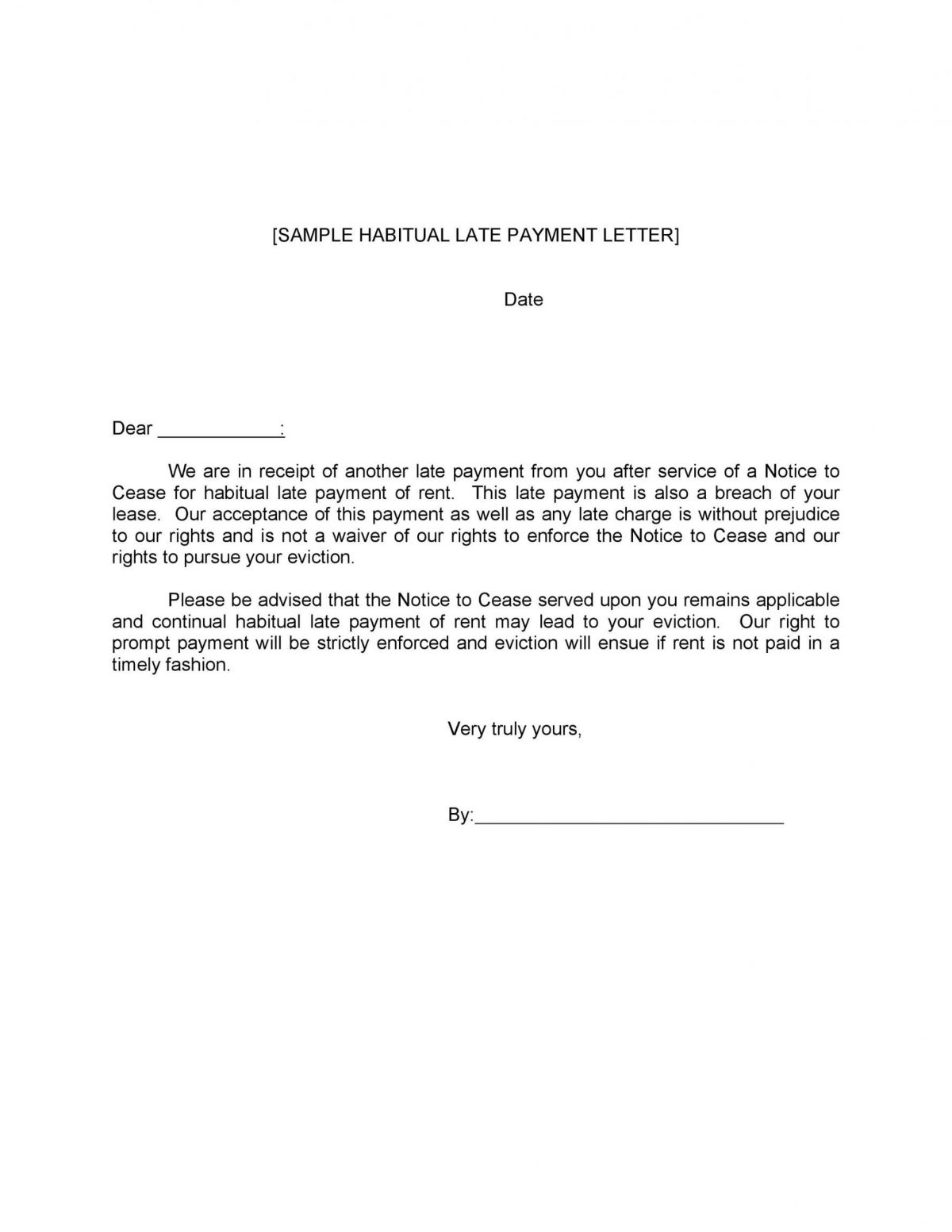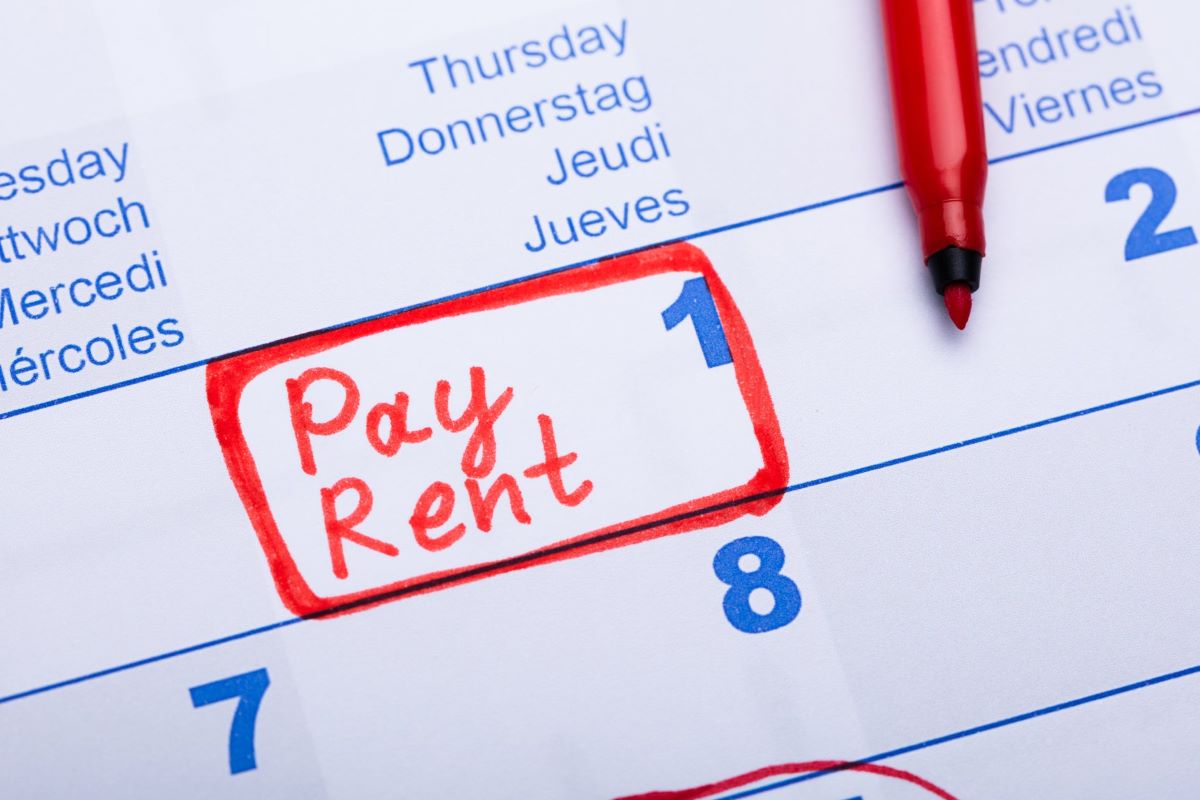Home>Finance>What Is The Normal Late Fee Percentage For A Rent


Finance
What Is The Normal Late Fee Percentage For A Rent
Modified: February 23, 2024
Learn about the typical late fee percentage for rent and its impact on personal finance. Understand the implications and consequences of late rent payments.
(Many of the links in this article redirect to a specific reviewed product. Your purchase of these products through affiliate links helps to generate commission for LiveWell, at no extra cost. Learn more)
Table of Contents
Introduction
Late fees are a common aspect of renting a property, and they serve as a financial incentive for tenants to pay their rent on time. Understanding the normal late fee percentage for rent is crucial for both landlords and tenants, as it directly impacts financial planning and budgeting. Additionally, knowing the legal regulations and industry standards pertaining to late fees is essential for ensuring fair and transparent rental agreements.
Late fee percentages can vary depending on a multitude of factors, including the location of the rental property, the terms of the lease agreement, and the prevailing industry standards. It's important for both landlords and tenants to be well-informed about the factors that influence late fee percentages, as well as any legal regulations that may govern them.
In this article, we will delve into the various factors that can affect the normal late fee percentage for rent, explore the legal regulations and industry standards surrounding late fees, and provide insights into negotiating late fees with landlords. By gaining a comprehensive understanding of these aspects, both landlords and tenants can navigate the realm of late fees with confidence and clarity.
Factors Affecting Late Fee Percentage
The late fee percentage for rent is influenced by several key factors that landlords and tenants should consider. Understanding these factors can shed light on the rationale behind the establishment of late fee percentages and help both parties navigate the terms of the lease agreement more effectively.
- Local Rental Market Conditions: The rental market conditions in a specific location can significantly impact the late fee percentage. In high-demand rental markets, landlords may be inclined to set higher late fees to incentivize timely rent payments, whereas in more competitive markets, late fees might be relatively lower to attract and retain tenants.
- Lease Agreement Terms: The terms outlined in the lease agreement, including the grace period for late payments and the specific percentage or flat fee designated as the late charge, play a pivotal role in determining the late fee percentage. Landlords have the flexibility to establish these terms based on their preferences and the local rental market dynamics.
- Tenant Risk Assessment: Landlords may assess the risk associated with individual tenants when setting late fee percentages. Factors such as a tenant’s rental history, creditworthiness, and overall reliability in meeting financial obligations can influence the late fee percentage specified in the lease agreement.
- Property Management Policies: Property management companies or individual landlords may have standardized policies regarding late fees across their rental properties. These policies can be influenced by the company’s financial objectives, risk management strategies, and overall approach to tenant relations.
- Economic Conditions: Broader economic conditions, such as inflation rates and interest rate trends, can indirectly impact late fee percentages. Landlords may adjust late fees to account for economic fluctuations and maintain the financial viability of their rental properties.
By considering these factors, landlords and tenants can gain insights into the rationale behind the determination of late fee percentages. Additionally, a thorough understanding of these factors can facilitate more informed discussions and negotiations regarding late fees, ultimately fostering transparent and mutually beneficial lease agreements.
Legal Regulations and Restrictions
When it comes to late fee percentages for rent, it’s essential to be aware of the legal regulations and restrictions that govern them. These regulations are designed to ensure fairness and prevent the imposition of excessive or unreasonable late fees on tenants. Both landlords and tenants should familiarize themselves with the applicable laws and regulations in their jurisdiction to uphold the integrity of rental agreements.
Legal restrictions on late fee percentages vary by location and are typically established at the state or municipal level. Some common legal considerations related to late fees include:
- Statutory Limits: Many jurisdictions impose statutory limits on late fee percentages, capping the maximum amount that landlords can charge as a late fee. These limits are designed to protect tenants from exorbitant late fees and promote equitable rental practices.
- Reasonableness Standard: In some regions, the concept of reasonableness is applied to late fees, requiring them to be proportionate to the actual damages incurred by the landlord due to late payments. This standard serves as a safeguard against unjustly high late fee percentages.
- Disclosure Requirements: Certain jurisdictions mandate that landlords clearly disclose the late fee terms in the lease agreement, ensuring that tenants are fully informed about the potential financial consequences of late payments.
- Prohibited Practices: Legal regulations may prohibit specific practices related to late fees, such as imposing late fees before the expiration of a grace period or applying late fees to partial rent payments.
It’s important for landlords to stay informed about the legal restrictions pertaining to late fees in their area and ensure compliance with applicable laws when drafting lease agreements. Similarly, tenants should educate themselves about their rights regarding late fees and seek clarification from landlords or legal professionals if they have concerns about the fairness of late fee percentages.
By adhering to legal regulations and restrictions, both landlords and tenants can foster transparent and harmonious rental relationships, mitigating potential disputes related to late fees and upholding the principles of fairness and legality in the realm of rental agreements.
Industry Standards
Industry standards play a significant role in shaping the normal late fee percentage for rent within the rental housing sector. These standards are influenced by prevailing practices, market dynamics, and the collective efforts of industry stakeholders to establish reasonable and balanced guidelines for late fees. Understanding industry standards can provide valuable insights for both landlords and tenants as they navigate the landscape of late fee percentages.
Key aspects of industry standards related to late fees include:
- Benchmarking Against Competitors: Landlords often consider the late fee percentages set by their competitors and peers within the local rental market. This benchmarking process helps them gauge the competitiveness and reasonableness of their late fee structures, ensuring that they remain aligned with industry norms.
- Professional Associations and Resources: Professional associations within the real estate and property management sectors may provide guidance on late fee percentages through best practice recommendations and educational resources. Landlords can leverage these resources to gain insights into industry-accepted late fee standards.
- Market Feedback and Trends: Ongoing market feedback and trends can influence industry standards for late fees. Landlords may adjust late fee percentages based on market dynamics, tenant behavior patterns, and feedback from property management professionals to remain competitive and responsive to market conditions.
- Tenant Expectations and Perceptions: Industry standards for late fee percentages are also shaped by tenant expectations and perceptions. Landlords strive to strike a balance between incentivizing timely rent payments and demonstrating understanding and flexibility toward tenants facing genuine financial challenges.
By considering industry standards, landlords can refine their late fee structures to align with prevailing practices and market dynamics, fostering a competitive yet tenant-friendly approach. For tenants, understanding industry standards can provide insights into the rationale behind late fee percentages and facilitate informed discussions with landlords regarding late fee terms.
Ultimately, industry standards serve as a guiding framework for landlords and tenants, promoting fair and reasonable late fee practices within the rental housing industry and contributing to harmonious landlord-tenant relationships.
Negotiating Late Fees with Landlords
When it comes to late fees for rent, tenants may find themselves in a position to negotiate with their landlords to establish fair and manageable late fee terms. Effective negotiation can lead to mutually beneficial outcomes, ensuring that late fee percentages are reasonable and aligned with the financial circumstances of tenants. Here are some key strategies for negotiating late fees with landlords:
- Open Communication: Initiating open and respectful communication with the landlord is essential. Tenants should express their willingness to fulfill their financial obligations while seeking understanding and flexibility regarding late fee percentages.
- Highlighting Payment History: Tenants with a strong track record of timely rent payments can leverage their payment history as a point of negotiation. Demonstrating consistent financial responsibility can support requests for leniency in late fee percentages.
- Proposing Alternative Terms: Tenants can propose alternative late fee structures, such as a lower percentage or a flat fee, that align with their financial capabilities. Offering constructive alternatives can demonstrate a proactive approach to addressing late fee concerns.
- Emphasizing Market Research: Conducting research on industry standards and prevailing late fee percentages in the local rental market can provide tenants with valuable insights to support their negotiation efforts. Landlords may be receptive to reasonable requests backed by market data.
- Seeking Compromise: Both tenants and landlords can explore compromises that strike a balance between incentivizing timely payments and accommodating tenants’ financial challenges. Flexible grace periods or graduated late fee structures are examples of potential compromises.
By employing these negotiation strategies, tenants can engage in constructive discussions with their landlords to establish late fee terms that reflect fairness and consideration for individual circumstances. It’s important for tenants to approach negotiations with a collaborative mindset, seeking solutions that benefit both parties and contribute to a positive landlord-tenant relationship.
Landlords, in turn, can leverage negotiations as an opportunity to demonstrate understanding and flexibility while upholding the financial viability of their rental properties. By engaging in transparent and empathetic discussions with tenants, landlords can foster trust and goodwill, ultimately contributing to a harmonious rental environment.
Conclusion
Understanding the normal late fee percentage for rent is essential for both landlords and tenants, as it directly impacts the financial dynamics of rental agreements. By delving into the factors that influence late fee percentages, exploring legal regulations and industry standards, and embracing effective negotiation strategies, both parties can navigate late fees with transparency and fairness.
For landlords, considering local rental market conditions, lease agreement terms, tenant risk assessment, property management policies, and broader economic conditions can provide valuable insights into the rationale behind late fee percentages. Additionally, staying informed about legal regulations and industry standards ensures that landlords establish reasonable and compliant late fee structures, fostering positive landlord-tenant relationships.
Tenants, on the other hand, can benefit from understanding the factors that influence late fee percentages, advocating for fair late fee terms through negotiation, and seeking clarity on legal regulations and industry standards. By engaging in open communication, highlighting payment history, proposing alternative terms, emphasizing market research, and seeking compromise, tenants can work collaboratively with landlords to establish late fee structures that align with their financial capabilities.
Legal regulations and restrictions serve as a safeguard against excessive late fees, promoting fairness and equity in rental agreements. By adhering to statutory limits, reasonableness standards, disclosure requirements, and prohibited practices, both landlords and tenants contribute to a rental environment characterized by legality and transparency.
Furthermore, industry standards provide a guiding framework for landlords and tenants, shaping the normal late fee percentage for rent based on market dynamics, tenant expectations, and professional best practices. By considering industry standards, landlords can refine their late fee structures to remain competitive and tenant-friendly, while tenants gain insights into the rationale behind late fee percentages.
Ultimately, navigating late fees in the realm of rental agreements requires a balanced approach that prioritizes fairness, open communication, and mutual understanding. By embracing the insights and strategies outlined in this article, landlords and tenants can establish late fee terms that contribute to harmonious and mutually beneficial rental relationships.














